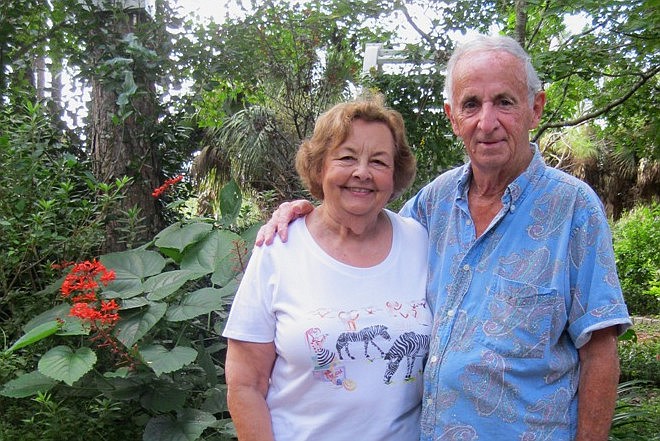- April 20, 2024
-
-
Loading

Loading

Bob and Loretta Sylvester have lived in Palm Coast for 20 years, after moving here from Coral Springs. Just as their landscaping was getting established, their area of Indian Trails was ravaged by the wildfires of 1998.
"The fires burned all the vegetation right up to the house," Loretta Sylvester recalls.
They replanted with natives like red and live oak, river birch, sweet gum, red maple, magnolia and tulip trees. Today some of the trees are over 30 feet tall and shade the half-acre property, which includes reserve land on a fresh water canal that drains into Bird of Paradise Lake.
Loretta is the gardener in the family and was inspired by her parents and particularly her grandfather, who loved snapdragons. The landscape is environmentally friendly; they have planted numerous native trees and shrubs and have minimal areas of grass. And they do not have an irrigation system. The yard contains a multitude of plants that bloom throughout the growing season. Camellias, wisteria, azaleas, dogwood, Indian hawthorn and a chaste tree brighten the yard in winter and springtime. A sunny section of the front yard is planted in antique roses.
She enjoys searching for unusual plants. One such specimen is a banana shrub, which is evergreen with glossy, deep green leaves. It blooms heavily in the spring with small, cream-colored flowers that look like tiny magnolia blossoms edged with crimson. It gets its name from its flowers, which smell like ripe bananas!
Loretta has been an active member of The Garden Club at Palm Coast for 16 years. Like others in the club, she shares her love of gardening by propagating plants and selling them at the club's monthly meeting plant sale. She also belongs to the Memory Makers Quilt Guild and incorporates her love for flowers in her designs.
Bob Sylvester helps out with the trimming and laid the concrete paver walkway and Belgian block curbing. He sold his electroplating company a few years ago and now enjoys building wooden birdhouses. He volunteers at the library twice a month and takes their dog, Mandy, to the Paws for Reading program, which encourages children to read.
Fall gardening chores
October marks the month for shorter days, hopefully less rain, and cooler weather. It is time for the last application of fertilizer for citrus and palms. Be sure to use a slow release fertilizer with micronutrients.
Replace the tired summer annuals with fresh, colorful plants like calendula, dianthus, delphinium, pansy, petunia, Shasta daisy, snapdragon and sweet alyssum.
You may also want to plant some bulbs like amaryllis, Aztec lily, calla, freesia, narcissus, rain and spider lily. Mulch flower and shrub beds for winter protection by applying up to two to three inches of mulch. Remember not to place mulch against the stem or trunks of plants: Trapped moisture can cause rot. If your mulch is old and matted, rake it so water and air can penetrate the soil.
If you have poinsettia and Christmas cactus indoors, you need to decrease the amount of uninterrupted light in order for them to bloom. Put them in a closet each night for four to six weeks to give them time to set blooms. If they are growing in your garden, be sure that they do not get artificial light after it gets dark.
Are you planting a fall vegetable garden? There are a number of vegetables you can plant this month: beets, broccoli, Brussels sprouts, cabbage, carrots, cauliflower, collards, endive, onions, radish, kale, spinach, strawberries, Swiss chard and turnips.